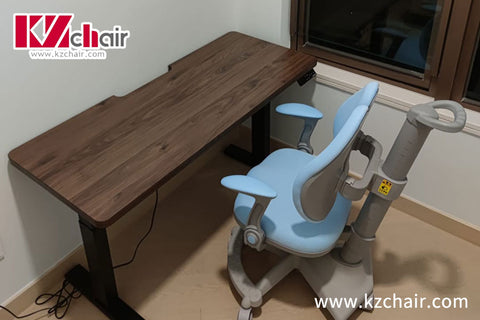6 criteria for purchasing children's ergonomic chairs
With the gradual expansion of the scale of ergonomic chairs, children's ergonomic chairs are becoming more and more common in the market, but many of the children's ergonomic chairs sold in the market have quality and safety problems, and consumers are also concerned about the quality of children's ergonomic chairs. The concept is very vague. In fact, ergonomics involves many fields. Let’s share the 6 standards of children’s ergonomic chairs. Quickly keep your eyes open and choose a children’s ergonomic chair that suits your children!
The logic of ergonomics
Ergonomics, in essence, is to make the use of tools fit the natural shape of the human body as much as possible, and the body does not need to actively adapt, so as to minimize fatigue and damage caused by long-term use of tools. The ergonomic chair is through a series of designs, which can maintain the efficiency of sitting posture at a high level, and it is not easy to get tired. So that users can work and live more safely, healthily, comfortably and efficiently.
Standard 1: Seat height standard
To avoid excessive pressure under the thighs, the height from the front of the seat to the ground or the footrests should not be greater than the distance from the soles of the feet to the crook of the thighs. It is most suitable for children aged 4~17 with a seat height range of 270~520mm.
Standard 2: seat depth standard
Three conditions must be met. The buttocks are fully supported, the waist is supported by the backrest, and there is an appropriate distance between the front edge of the seat and the lower legs, so that the lower legs can move freely. The most suitable for children aged 4~17 is the seat depth range of 180~360mm.

Standard 3: The seat surface is inclined
The larger the inclination angle of the seat surface, the higher the pressure ratio of the backrest sharing the seat surface, the lower the force on the muscles of the lower limbs, the less fatigue, and it can also prevent the buttocks from gradually slipping out of the seat surface. The general recommendation is 3~4°.
Standard 4: Backrest Design
The width of the backrest is preferably 240~380mm, which can effectively support the width of the child's back. The backrest should not be too high. Usually, the shoulder rest should be lower than the lower edge of the scapula, with a height of about 460mm. The backrest of the chair is designed as an "S"-shaped curve, which is basically consistent with the curvature of the human spine. It can not only satisfy children's comfortable learning and entertainment, but also It can also effectively prevent the curvature of the spine caused by an inappropriate inclination angle, and maintain a backrest inclination angle of 95°~105°.
Standard 5: Cushion Design Standards
A certain cushioning of the seat surface is required, and the surface material of the chair cushion should be made of fiber material, which can not only be breathable, but also reduce the body's slippage. If the cushion material is too soft, the pressure distribution will be uneven.
Standard 6: Handrail Design Standards
When a person sits on the chair, the arms are naturally placed on it, which reduces the burden on the arms, helps the muscles of the upper limbs to rest, and increases the comfort. The height of the armrest is preferably 200-250mm, and the front end of the armrest is slightly higher, which inclines with the inclination of the seat surface and the backrest.
The design of children's ergonomic chairs should conform to children's physiological and psychological characteristics and usage habits. Poorly designed children's tables and chairs will directly affect the physical health and learning effects of young people, causing myopia, hunchback, and affecting bone development.









